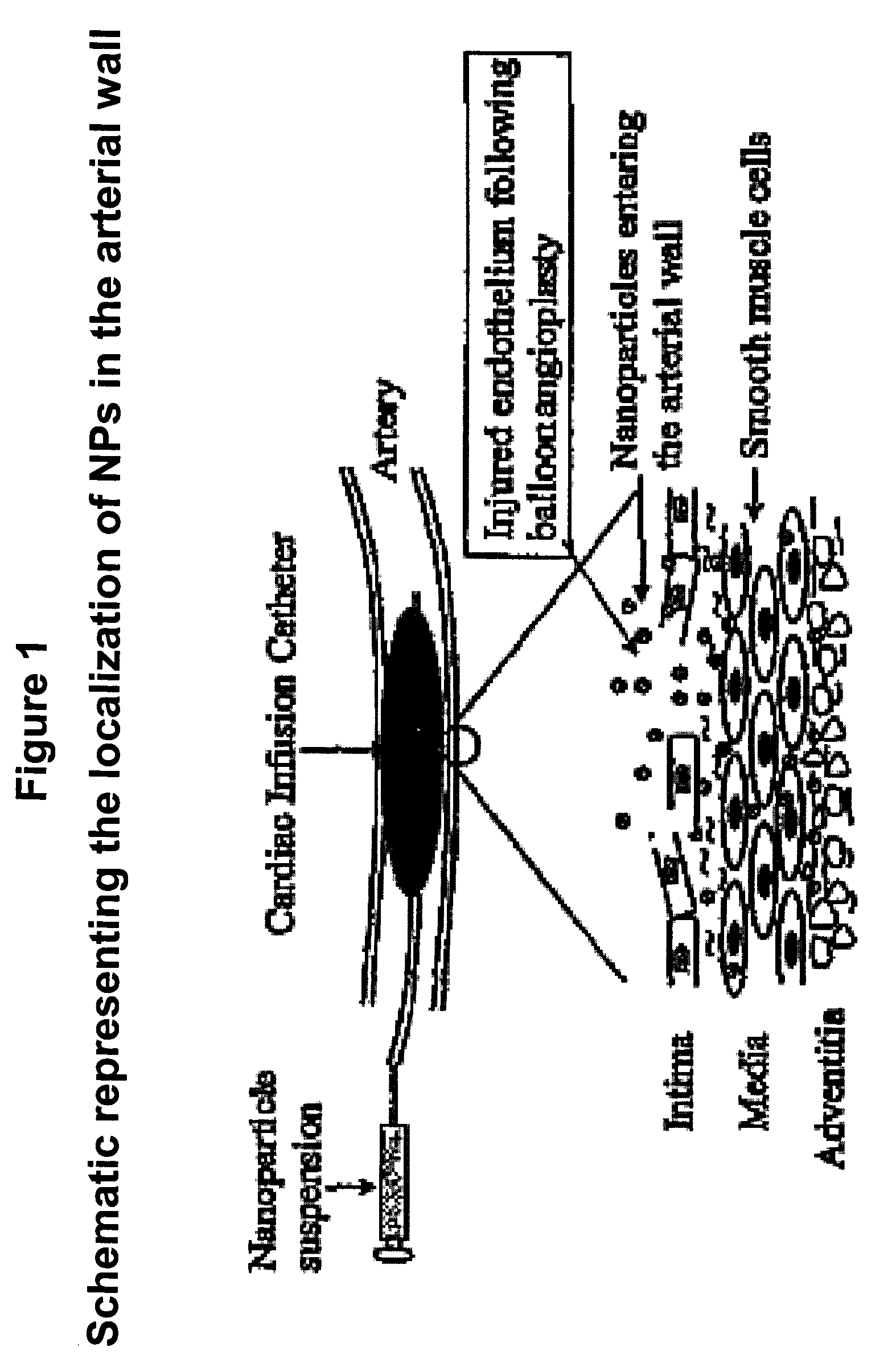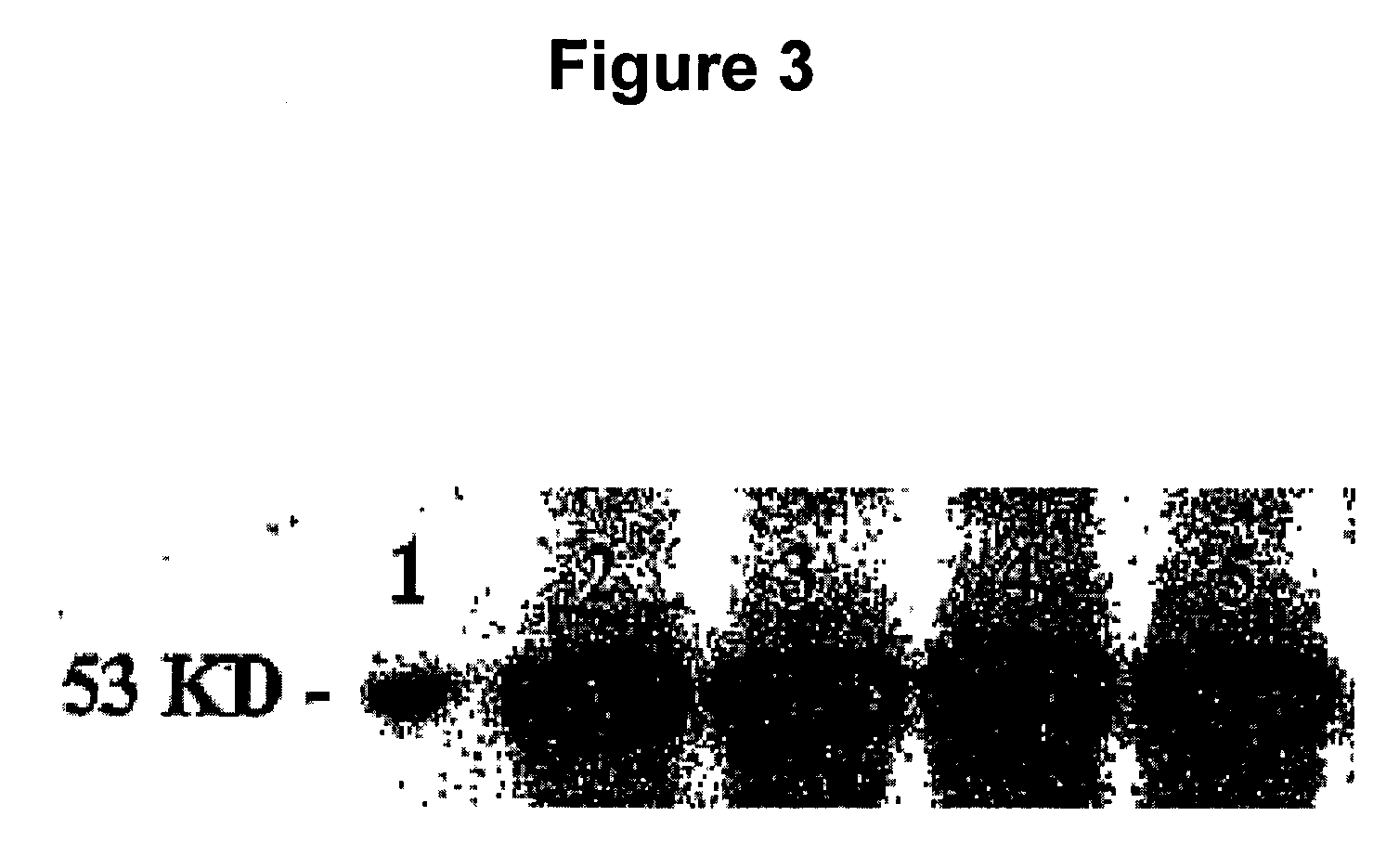Apoptosis-Modulating Protein Therapy for Proliferative Disorders and Nanoparticles Containing the Same
- Summary
- Abstract
- Description
- Claims
- Application Information
AI Technical Summary
Benefits of technology
Problems solved by technology
Method used
Image
Examples
example i
Sustained Release of p53 Protein From Nanoparticles
[0074]A western blot was performed to assess p53 release from the nanoparticle formulation (FIG. 3). The western blot analysis of p53 protein release from NPs demonstrated robust bands corresponding to the p53 protein band prior to its encapsulation. This confirms that the protein maintained its configuration following its encapsulating into the NPs, and also when it is released slowly from NPs.
example ii
Balloon Injury and Inhibition Restenosis With p53 Protein-Loaded NP in a Rat Carotid Artery Model
[0075]The preliminary study in rat carotid artery model demonstrated significant inhibition of restenosis with a single-dose localized administration of p53 protein-loaded NPs (dose of protein=1.6 microgram). After balloon injury, NP suspension in saline was infused over 5 minutes at 2 atm of pressure (three 1-min periods between infusions of 70 μl of the suspension, with a 1 min period between infusions). The control group contained NPs without p53 protein. After three weeks, infused arteries were isolated, sectioned every 3 mm from the proximal to the distal ends, and were analyzed for proliferation. See FIGS. 4A-4D. The data demonstrate that p53 protein in modified NPs is effective in inhibiting restenosis. There is significant inhibition of intima to media ratio (65% inhibition of restenosis), and a corresponding increase in the lumen diameter in the p53 protein treated animals as co...
PUM
| Property | Measurement | Unit |
|---|---|---|
| Therapeutic | aaaaa | aaaaa |
| Biodegradability | aaaaa | aaaaa |
Abstract
Description
Claims
Application Information
 Login to View More
Login to View More - R&D
- Intellectual Property
- Life Sciences
- Materials
- Tech Scout
- Unparalleled Data Quality
- Higher Quality Content
- 60% Fewer Hallucinations
Browse by: Latest US Patents, China's latest patents, Technical Efficacy Thesaurus, Application Domain, Technology Topic, Popular Technical Reports.
© 2025 PatSnap. All rights reserved.Legal|Privacy policy|Modern Slavery Act Transparency Statement|Sitemap|About US| Contact US: help@patsnap.com



